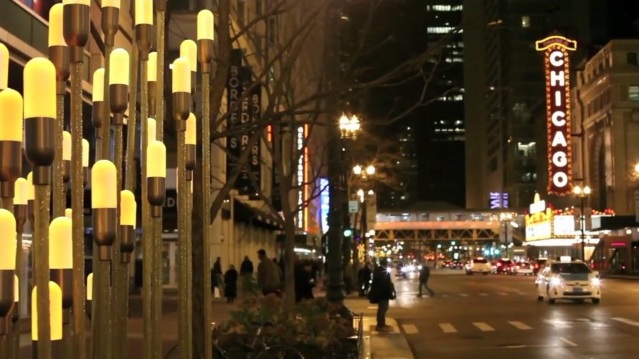Loop Alliance Hopes Counting State Street Pedestrians Will Spur Growth
By Kirsten Onsgard in News on Mar 29, 2016 4:47PM

Rooftop cameras counting downtown pedestrians might seem a bit Orwellian, but the Chicago Loop Alliance is hoping that its pedestrian traffic data will help spur economic growth.
Placed at seven building locations along State Street, the nine counters are designed to track foot traffic so property and business owners can understand how to best market their spaces to passers-by. The Loop Alliance first announced the three-year, $167,000 agreement last March with its vendor, the UK-based company Springboard, according to Crain's, and began collecting data at the beginning of this year.
So far, some of the results might seem unsurprising: Traffic spiked the week of St. Patrick's Day compared to previous weeks, and 256,135 people were counted the day of the parade, March 12. A total of 1.81 million were counted the week of March 7 to 13, and 1.7 million were counted the following week.
But this data also shows trends, peak times and spikes around special events that could help business owners decide when to offer specials to incentivize people to spend more time in the Loop, according to Loop Alliance President and CEO Michael Edwards. For example, traffic often spikes at three times during weekdays: morning, lunchtime and night. But during the week of March 14 to March 20, 32,000 people were counted at 6 p.m., compared to 20,000 at 8 a.m.
"It seems to be that there is almost twice as many people on State Street in the evening, so that would be a better time to runs specials," Edwards told Chicagoist. "If we could keep those people downtown, and they all bought one more beer, that would be a lot of economic development."
The counters could also add another concrete number to estimates of economic impact surrounding events like the NFL Draft, he said, and anticipate and measure spikes.
"If the city rolls out the red carpet for it, everyone assumes it has economic benefit, and I am sure it does," Edwards said. "Now, we can maybe articulate that a little bit better and what that means."
Three more counters are slated to be installed on Michigan Avenue at the Chicago River, Washington Street and Adams Street, which will be useful in comparing foot traffic on separate streets. Because this is the first foot traffic count since the Department of Transportation calculated it manually in 2007, it will also be helpful in comparing to similar metropolitan areas.
And if the thought of being tracked feels a little creepy, know that these counters—which appear like cameras—do not track identifying information or store images.